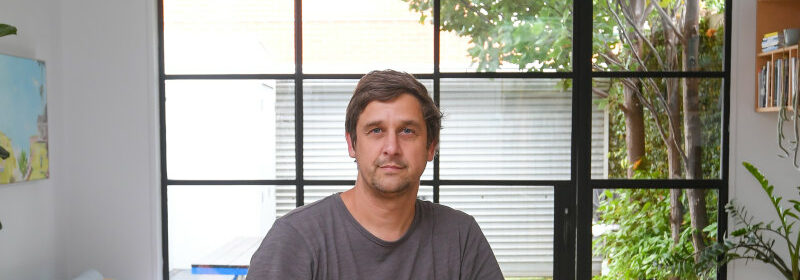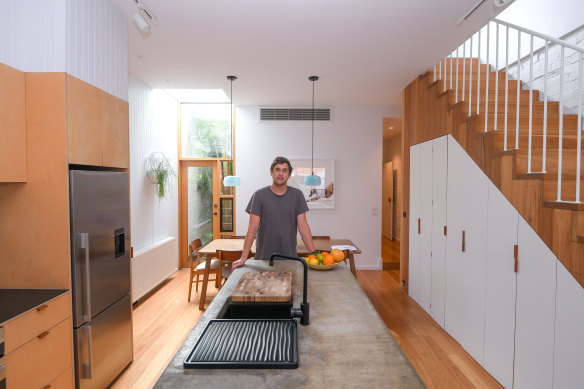The Melbourne neighbourhoods no one wants to leave

Key points
- Rising housing costs are causing homeowners to rethink moving as often.
- A generational preference to hang on to the family home is also influencing the trend.
- Experts say the trend may reverse in the 2030s when the children of Baby Boomers inherit the family homes.
Property listings
Homeowners across Melbourne are holding onto their homes for longer and in some parts of the city, the time between resales has more than doubled from two decades ago.
The increasing cost of transacting property has discouraged owners from moving, while empty nesters in family homes often find themselves hosting grandchildren and need the space.
Median hold times for houses increased from six years to nearly 10 years across greater Melbourne, and for units that figure more than doubled, from four years and two months to eight years and five months.
In inner Melbourne, the median hold time for houses was the largest increase in the city, more than doubling from five years and eight months to 12 years and four months, CoreLogic figures show.
The next largest increase was on the Mornington Peninsula, where the median hold time grew from five years and six months to almost 11 years.
CoreLogic head of research Tim Lawless said the increasing cost and lack of affordable housing were the biggest factors pushing up hold times.
“Clearly, the cost of transacting has increased substantially,” he said. “There’s been a lot of bracket creep in [stamp duty] over time … that has become a larger barrier.”
The large amount of time, effort and money required to buy a house was discouraging owners from moving, Lawless said. Home owners were instead aiming to improve their home to account for any changes in lifestyle, rather than buying a new house if their circumstances changed.
“They would be staying put for longer and looking to maximise the comfort and value of their own homes,” he said.
Melbourne’s most attractive suburb measured by hold time was Vermont South, where home owners held their properties for more than 22 years.
That was followed by Eaglemont and Carnegie at more than 21 years apiece, while a two-decade average was achieved by home owners in Knoxfield, Coldstream, Clarinda, Seaholme, St Helena and Taylors Lakes.
Dan Gayfer has owned his Fitzroy North home for close to 15 years, more than the suburb’s median hold time of 13 years and five months.
Gayfer, who owns an eponymous design business, renovated the home 6½ years ago with a long tenure in mind.
“We wanted to create something that would push into the medium to long term for us,” he said. “It was about looking ahead and having a family. We were thinking … of living there for about [another] 10 years. We nearly got there!”
Dan Gayfer says he would stay longer in his current home if possible.Credit:Justin McManus
Gayfer attempted to maximise the living space in the home by creating as many indoor and outdoor living spaces as possible, and ended up with two of each.
It didn’t prove enough room for his growing family, however, and they decided to move a suburb further out to get a home with a larger block.
“We’re not going that far. We’re just over the Merri Creek in Northcote,” he said. “It’s a double-fronted Edwardian, so it’s about three times the size as what we have now.
“We’d probably go on a similar timeline to what we are now. We’ll live in it for five years and hopefully do a renovation after that, then hopefully stay in it longer than eight years after that.”
Nelson Alexander agent Charlie Barham, who has the listing, said the need to leave Fitzroy and the surrounds for more space was a common reason his clients sold, but the inverse also brought in buyers.
“When people leave our area it generally comes down to a size point of view, where they can move further out and get more land size when it comes to growing families,” Barham said. “But they move back into the inner city when it comes time to downsize.”
The Demographics Group co-founder Simon Kuestenmacher said the large cohort of Baby Boomers was skewing hold times longer due to a generational preference to stay in the family home as long as possible.
“Sure, a few people downsize and move to the Gold Coast. But ultimately most people tell you they want to be carried out of their home,” he said.
Kuestenmacher said the combination of high housing costs and the high cost of selling a home, largely due to stamp duty, made it hard for older homeowners to justify.
“There’s no incentive once your kids leave to downsize your house,” he said. “Because all of a sudden, your kids have given you some grandkids, so you want the spare bedrooms to host the family.
“Only when it physically becomes too hard to maintain do they downsize.”
Quantify Strategic Insights head of data and insights Angie Zigomanis said high housing costs were changing home buyer behaviour.
“Now they’re often renting for longer and they buy their forever home as their first home,” he said. “If you have to stump up stamp duty and selling costs all the way through [climbing the property ladder] it’s probably better to get the one you want straight away.
“I think a lot of people now want their forever home first up. So they’ll buy everything with that plan instead of just buying something they can afford straight away.”
Most Viewed in Property
Source: Read Full Article
